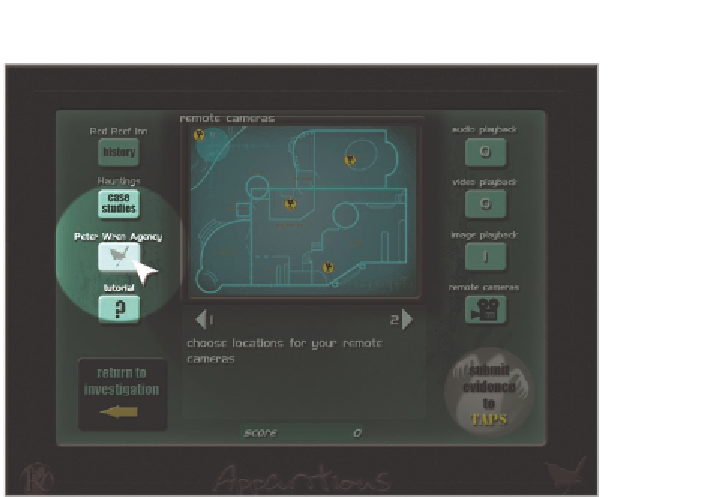Game Development Reference
In-Depth Information
FiGuRe 5.15
Designers create a rollover state for clickable items so that when your
cursor moves over the object, it will wiggle or change color to let you know it can be clicked.
Any item that shows a value change can be clicked; and when clicked, a simple
animation shows the button appear to depress and then rise again. This type
of animation has a resting state (as shown for all the buttons in Figure 5.15), a
rollover state (the value change shown by the Peter Wren Agency button), and
a click state. The click state is created by duplicating the button in Photoshop,
offsetting it to the right and then down a few pixels, and reversing the lighting
in layer-style effects (bevel and emboss).
Reward animations also tend to be repeating types. On the plus side, using
repeating animations allows the game to use assets over and over, thus reduc-
ing the strain on the system and giving the designer the possibility of investing
more animation in the main characters. The downside is that some rewards,
which are meant to be fun and a big “wow” factor in games, can get boring
when seen repeatedly. Designers often try to solve this dilemma by creating a
few variations of reward animations (fireworks, explosions, star bursts, fairy
dust, and so on).
The designer needs to figure out where they will get the most bang for their
buck when it comes to investing the assets of the game with animations. A
game that doesn't have any animation these days tends to be ignored by players.

